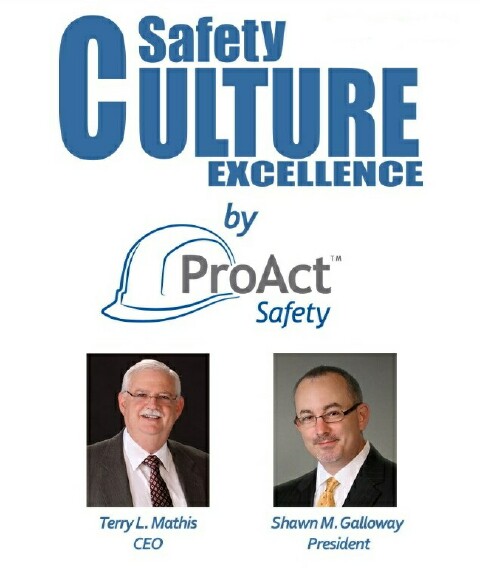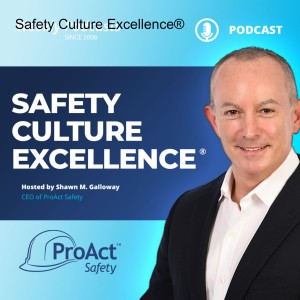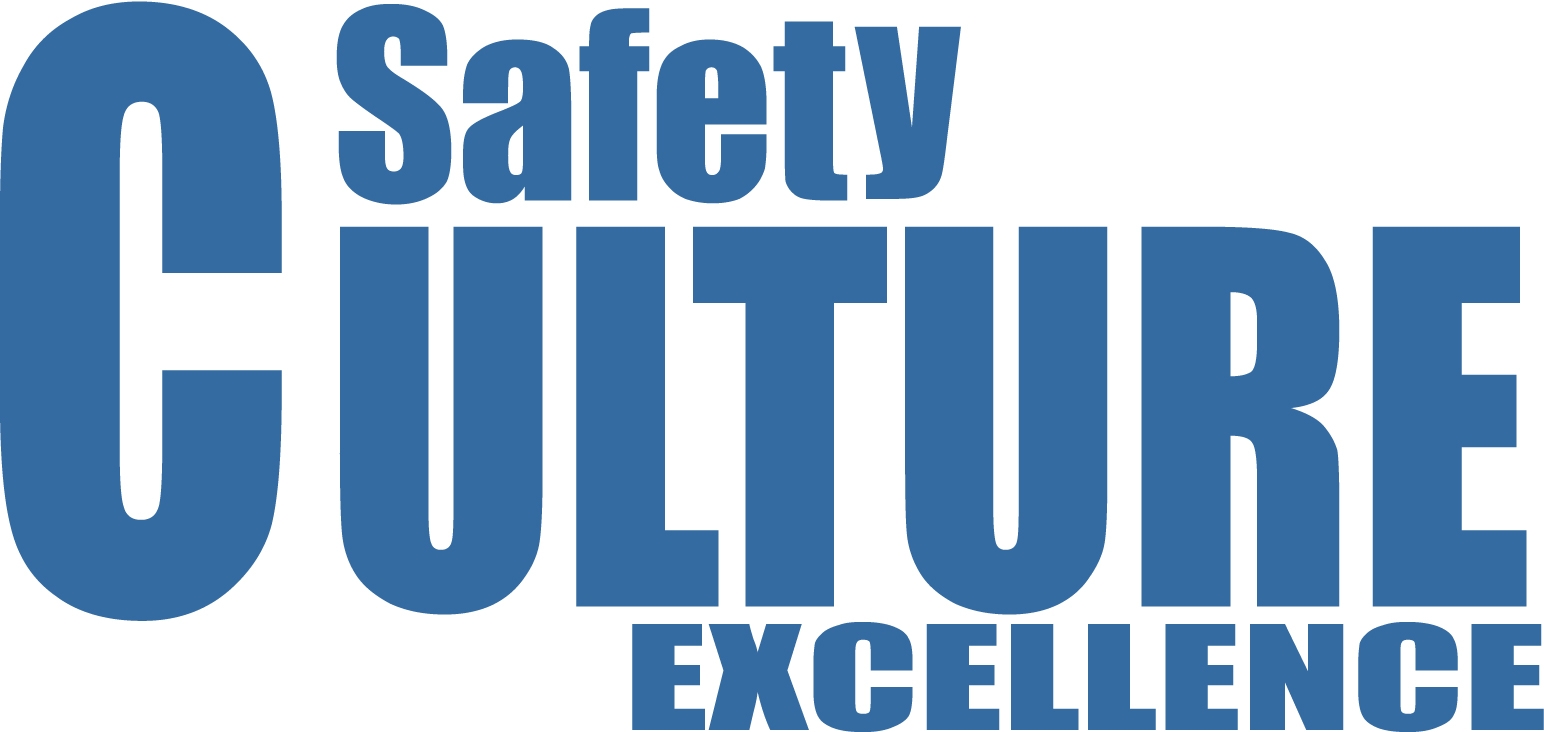Episodes

Monday Dec 30, 2013
322 - Is the Term Accident Still Acceptable?
Monday Dec 30, 2013
Monday Dec 30, 2013
Greetings everyone, this podcast recorded while in Canmore, Alberta. I’d like to share an article Terry Mathis wrote, published October 2013 in EHS Today Magazine. The published article can either be found on the magazine’s website or under Insights at www.ProActSafety.com.
I hope you enjoy the podcast this week. If you would like to download or play on demand our other podcasts, please visit the ProAct Safety’s podcast website at: http://www.safetycultureexcellence.com. If you would like access to archived podcasts (older than 90 days – dating back to January 2008) please visit www.ProActSafety.com/Store. For more detailed strategies to achieve and sustain excellence in performance and culture, pick up a copy of our book, STEPS to Safety Culture Excellence - http://proactsafety.com/insights/steps-to-safety-culture-excellence
Have a great week!
Shawn M. Galloway
ProAct Safety

Monday Dec 23, 2013
321 - Is Failing Less a Better Safety Goal Than Achieving Success?
Monday Dec 23, 2013
Monday Dec 23, 2013
Greetings everyone, this podcast recorded while in Chicago, IL. I’d like to share an article I wrote, published October 2013 in OHS Magazine. The published article can either be found on the magazine’s website or under Insights at www.ProActSafety.com.
I hope you enjoy the podcast this week. If you would like to download or play on demand our other podcasts, please visit the ProAct Safety’s podcast website at: http://www.safetycultureexcellence.com. If you would like access to archived podcasts (older than 90 days – dating back to January 2008) please visit www.ProActSafety.com/Store. For more detailed strategies to achieve and sustain excellence in performance and culture, pick up a copy of our book, STEPS to Safety Culture Excellence - http://proactsafety.com/insights/steps-to-safety-culture-excellence
Have a great week!
Shawn M. Galloway
ProAct Safety

Wednesday Dec 11, 2013
Showing Up: Step One of Safety Leadership
Wednesday Dec 11, 2013
Wednesday Dec 11, 2013
We have been told that the first step of doing any job is showing up. This is equally true of the job of leading safety. Leaders who are noticeably absent lose opportunities to effectively lead. Obviously leaders cannot be everywhere every time; but they can pick and choose key opportunities to emphasize the importance of safety with their presence.
When tragedies happen and leaders don’t show up, what is the message sent to the troops? When major new safety initiatives begin without the in-person support of key leaders, how official and important are they. When organizations have safety teams or committees which oversee safety efforts, how do they proceed when leaders fail to attend?
The physical presence of leaders must be accompanied by their involvement and attention as well. A worker commented recently, “There was a serious safety incident and none of the leaders got mad.” He reflected that at his last job leaders showed emotions when safety efforts didn’t go well and caused heated discussions and decisive actions. In short, he equated emotion with caring. Leaders show they care when they show up and participate. What they do in their offices and the boardroom will not have the necessary impact if they are not present and engaged at key happenings in the workplace. Leaders, start with step one.
-Terry L. Mathis
Terry L. Mathis is the founder and CEO of ProAct Safety, an international safety and performance excellence firm. He is known for his dynamic presentations in the fields of behavioral and cultural safety, leadership, and operational performance, and is a regular speaker at ASSE, NSC, and numerous company and industry conferences. EHS Today listed Terry as a Safety Guru in ‘The 50 People Who Most Influenced EHS in 2010, 2011 and 2012-2013. He has been a frequent contributor to industry magazines for over 15 years and is the coauthor of STEPS to Safety Culture Excellence, 2013, WILEY.

Monday Dec 02, 2013
318 - Safety Strategy: What Great Leaders Do Well
Monday Dec 02, 2013
Monday Dec 02, 2013
Greetings everyone, this podcast recorded while in Cotulla, TX. I’d like to share an article I wrote, published November 2013 in OHS Magazine. The published article can either be found on the magazine’s website or under Insights at www.ProActSafety.com.
I hope you enjoy the podcast this week. If you would like to download or play on demand our other podcasts, please visit the ProAct Safety’s podcast website at: http://www.safetycultureexcellence.com. If you would like access to archived podcasts (older than 90 days – dating back to January 2008) please visit www.ProActSafety.com/Store. For more detailed strategies to achieve and sustain excellence in performance and culture, pick up a copy of our book, STEPS to Safety Culture Excellence - http://proactsafety.com/insights/steps-to-safety-culture-excellence
Have a great week!
Shawn M. Galloway
ProAct Safety

Wednesday Nov 27, 2013
Leading vs. Lagging Indicators in Safety
Wednesday Nov 27, 2013
Wednesday Nov 27, 2013
As more and more leaders and safety professionals realize the limitations of reactive safety, they search for leading indicators to help them manage safety more proactively. This thinking fueled the concept that lagging indicators alone, are not truly representative of safety performance, nor are they predictive or prescriptive.
The first round of so-called “leading indicators” was little more than a measurement of safety-related activities: hours of safety training, attendance at safety meetings, participation in safety programs, etc. OSHA’s crackdown on incentives that could potentially suppress reporting of accidents drove many organizations to base their incentives on these activity metrics rather than simply not having an accident.
When behavior-based safety became the rage, the measurement of behaviors from observations came to be thought of as a leading indicator. As safety culture became a buzz phrase, perception surveys gained in popularity and came to be considered another potential leading indicator. The search for meaningful leading indicators goes on because no one of these has proven adequate in predicting and preventing injuries.
Where none of these alone succeed, all of them together potentially can. A balanced-scorecard approach in which the metrics not only complement, but predict each other has proven quite effective in proactively predicting how to prevent accidents. When you measure how much activity it takes to change perceptions, how much of a change in perceptions it takes to change behaviors, and how much behavior change it takes to change the lagging indicators, you begin to truly measure the effectiveness of safety efforts. Just as balanced scorecards have revolutionized strategic management, with our most successful clients, balanced scorecards for safety have proven to have a transformational impact on safety management. How balanced are your measurements?
-Terry L. Mathis
Terry L. Mathis is the founder and CEO of ProAct Safety, an international safety and performance excellence firm. He is known for his dynamic presentations in the fields of behavioral and cultural safety, leadership, and operational performance, and is a regular speaker at ASSE, NSC, and numerous company and industry conferences. EHS Today listed Terry as a Safety Guru in ‘The 50 People Who Most Influenced EHS in 2010, 2011 and 2012-2013. He has been a frequent contributor to industry magazines for over 15 years and is the coauthor of STEPS to Safety Culture Excellence, 2013, WILEY.

Monday Nov 18, 2013
316 - Mergers and Acquisitions: Aligning Your Next Culture
Monday Nov 18, 2013
Monday Nov 18, 2013
Greetings everyone, this podcast recorded while in Craig, CO. I’d like to share an article I wrote, published September 2013 in BIC Magazine. The published article can either be found on the magazine’s website or under Insights at www.ProActSafety.com.
I hope you enjoy the podcast this week. If you would like to download or play on demand our other podcasts, please visit the ProAct Safety’s podcast website at: http://www.safetycultureexcellence.com. If you would like access to archived podcasts (older than 90 days – dating back to January 2008) please visit www.ProActSafety.com/Store. For more detailed strategies to achieve and sustain excellence in performance and culture, pick up a copy of our book, STEPS to Safety Culture Excellence - http://proactsafety.com/insights/steps-to-safety-culture-excellence
Have a great week!
Shawn M. Galloway
ProAct Safety

Wednesday Nov 06, 2013
The Danger of Compliance
Wednesday Nov 06, 2013
Wednesday Nov 06, 2013
The goal of many safety programs is to get all workers and the workplace into compliance with applicable rules and regulations. This is a necessary and foundational step in any effective safety effort. However, if the goals and progression stop at compliance, this can cause crucial problems for the future. Once the workplace passes muster and workers know and adhere to the rules, then what? The next steps in safety must take the organization beyond the performance levels achieved through compliance. These steps require much more of workers than simply following the rules.
Beyond compliance is excellence through safety culture. An excellent safety culture is one in which workers are engaged, not simply conforming. Worker engagement in safety is seldom accomplished with the tools of compliance. A new set of tools that challenges workers to belong, participate, and expend creative energy is needed. The tools of compliance cannot be used or even adapted to meet these challenges. In fact, the tools used by many organizations to accomplish compliance can actually hamper or kill employee engagement. A work force can be policed into compliance but must be coached into excellence.
Failure to change from safety cops to safety coaches can stop the progression of safety performance in its tracks. Workers will develop a “good enough” attitude toward safety if there is no reason to go above and beyond. They will not buy in if there is no compelling rationale. They will not feel part of the effort if there are no involvement opportunities. They will never own the safety-excellence effort if they are not allowed to help create it. Recognizing the point at which compliance needs to give way to excellence is the key to continuous improvement in safety.
-Terry L. Mathis
Terry L. Mathis is the founder and CEO of ProAct Safety, an international safety and performance excellence firm. He is known for his dynamic presentations in the fields of behavioral and cultural safety, leadership, and operational performance, and is a regular speaker at ASSE, NSC, and numerous company and industry conferences. EHS Today listed Terry as a Safety Guru in ‘The 50 People Who Most Influenced EHS in 2010, 2011 and 2012-2013. He has been a frequent contributor to industry magazines for over 15 years and is the coauthor of STEPS to Safety Culture Excellence, 2013, WILEY.

Friday Oct 25, 2013
Is Your Safety Program Viral or Vile?
Friday Oct 25, 2013
Friday Oct 25, 2013
How many of your employees brag about the safety program and are excited about their participation? How many would rather pay their own money to not participate in or attend safety events? Engagement is accepted as an important indicator of the culture and the shared priority or value of safety. How many excited and willing participants do you have in your safety culture? How many individuals are eager to create and star-in a video to show precisely how proud they are? Weatherford found some.
As I’m currently traveling the many global oil fields to assess the major contractors' cultures of a major Oil and Gas Operator client, I’m exposed to some similar and some radically different approaches to safety. All of the organizations I’m interviewing have mature safety programs and evolving cultures around safety. Not all have videos they can point me to that outlines an approach they are proud of.
In some recent interviews, several individuals directed me to a video to learn more about a particular approach within their company, Weatherford. When the video was first brought to my attention in 2012, I was impressed, but not as impressed as when over a year later, across the world from the group that created it, others were bragging about it. To see this video, visit this YouTube link: http://youtu.be/i1yJgRJ4za4
I should point out that other organizations have videos created to highlight the pride in safety and accomplishments. Not all have reached a point of becoming viral. On a side note, I find it shameful that the majority of videos having to do with safety that become viral, are injury-related. I received one today that was intended to (according to accompanying message) provoke laughter. I stopped it half-way through as it was questionable whether the Darwin-award winners survived or not. I’m surprised people find decisions that led to major injury or death, funny.
Do your safety programs, videos and information make people smile, create interest and facilitate engagement? Or, do they prompt cringing, create disengagement and turn people off to the message? Safety should be viewed as more than a condition of employment. Safety adds value to the job site, personnel involved, and the families they are working to support. When people enjoy the content, they might (but rarely) share if they have the extra time. When they are a part of the content and it is entertaining and adds value, they make time to share.
- Shawn M. Galloway
Shawn M. Galloway is the President of ProAct Safety and the coauthor of two books, his latest published Feb 2013 by Wiley is STEPS to Safety Culture Excellence. As an internationally recognized safety excellence expert, he has helped hundreds of organizations within every major industry to achieve and sustain excellence in performance and culture. He has been listed in this year’s National Safety Council Top 40 Rising Stars, EHS Today Magazine’s 50 People Who Most Influenced EHS and ISHN Magazine’s POWER 101 – Leaders of the EHS World and again in the recent, elite list of Up and Coming Thought Leaders. In addition to the books, Shawn has authored over 300 podcasts, 100 articles and 80 videos on the subject of safety excellence in culture and performance.

Wednesday Oct 23, 2013
Safety Rules vs. Safety Principles
Wednesday Oct 23, 2013
Wednesday Oct 23, 2013
An expert on team-building once suggested that an excellent team member may occasionally break a rule but would NEVER violate a principle. At first, these two concepts seem incongruous. How could someone break a rule without violating a principle as well? The simple answer is that rules are incomplete and imperfect. They are often made with good intentions but seldom completely address all contingencies or always achieve the goal for which they were created. Principles, on the other hand, are more universal. They apply to all or many situations whereas rules are often specific to a particular task or circumstance. Also, a few principles can replace a lot of rules making it easier for workers to internalize them.
For example: A rule might be “Never walk underneath a suspended load on a crane” or “Never walk into the path of an oncoming fork truck” or “Always walk through the pedestrian doors and not through the equipment doors.” The principle behind these and many other rules is “Always avoid placing yourself in the path of moving or potentially moving objects.” The more often you are in the path, the more likely you will be struck by a moving object.
Teaching workers safety principles prepares them to meet a variety of risks and to creatively apply what they have learned. Rules tend to be “one rule to one risk” and teach workers to be mindlessly compliant. What do they do when they face a task for which the organization has no rule or is an exception to the rule? If they know the principle, they tend to assess the situation and devise a strategy to address it.
Rules are guidelines to play a game. Too many rules can make safety seem like an artificial activity governed by arbitrary guidelines. Principles are strategic values that offer knowledge and wisdom to apply to the variety of situations we face in life and work. They guide thinking rather than replacing it.
-Terry L. Mathis
Terry L. Mathis is the founder and CEO of ProAct Safety, an international safety and performance excellence firm. He is known for his dynamic presentations in the fields of behavioral and cultural safety, leadership, and operational performance, and is a regular speaker at ASSE, NSC, and numerous company and industry conferences. EHS Today listed Terry as a Safety Guru in ‘The 50 People Who Most Influenced EHS in 2010, 2011 and 2012-2013. He has been a frequent contributor to industry magazines for over 15 years and is the coauthor of STEPS to Safety Culture Excellence, 2013, WILEY.

Monday Oct 21, 2013
312 – Who Really Owns Safety?
Monday Oct 21, 2013
Monday Oct 21, 2013
Greetings everyone, this podcast recorded while in Bethesda, MD. I’d like to share an article I wrote, published August 2013 in ISHN Magazine. The published article can either be found on the magazine’s website or under Insights at www.ProActSafety.com.
I hope you enjoy the podcast this week. If you would like to download or play on demand our other podcasts, please visit the ProAct Safety’s podcast website at: http://www.safetycultureexcellence.com. If you would like access to archived podcasts (older than 90 days – dating back to January 2008) please visit www.ProActSafety.com/Store. For more detailed strategies to achieve and sustain excellence in performance and culture, pick up a copy of our book, STEPS to Safety Culture Excellence - http://proactsafety.com/insights/steps-to-safety-culture-excellence
Have a great week!
Shawn M. Galloway
ProAct Safety

